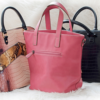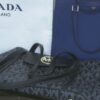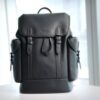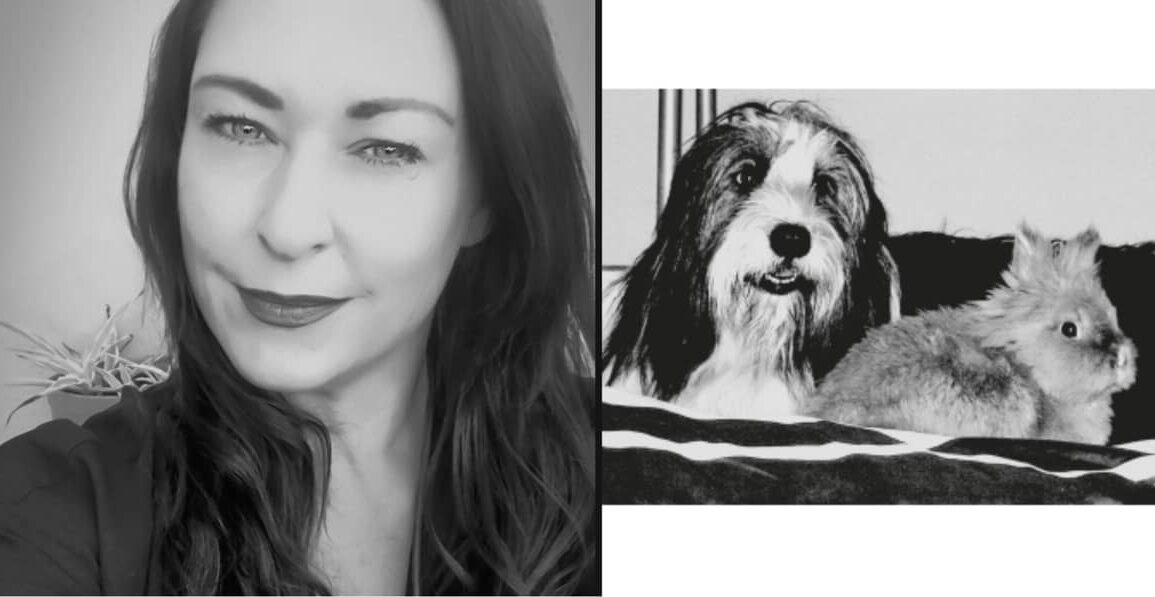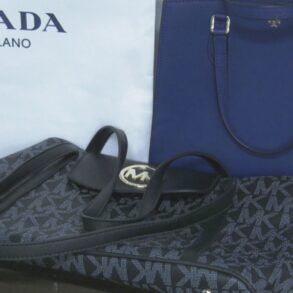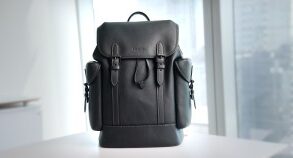Luckynelly is a slow fashion label that was founded in Berlin in 2012. All items are handmade and vegan and have already been seen on catwalks in New York, Paris and Berlin. FashionUnited spoke to founder Christine Rochlitz about sustainable material innovations, how Luckynelly was founded and the process, transparency and promises behind every item.
You have been experimenting with vegan material innovations for Luckynelly since 2012. Could you describe your motivation behind this and how the label came about?
As I have always been very interested in fashion, design, interiors, painting, colours, new trends and creating unique and exclusive things, I studied fashion design at Bielefeld University of Applied Sciences and successfully graduated and established my own brand Luckynelly in Berlin in 2012. The brand name is inspired by my beloved bearded collie Nelly and my rabbit Lucky. They were my muses and also inspired the decision to use only non-violent and vegan materials, thus doing away with animal skins, leather, fur, wool and others. Of course, this was also due to my great love of nature and animals, and to make the fashion world a little better and more sustainable. At that time, the label ‘vegan’ was still largely unknown in the fashion industry. That is why we see ourselves as visionaries and pioneers of vegan and sustainable luxury handbags.
These materials include strawberries, apples, coconuts, pineapples, cork and more. What is your favourite material and why?
When I came across cork, I immediately started using this great material for our collections because cork looks and feels like real leather and can even be embossed to look like real snakeskin or crocodile skin. It is also a sustainable and completely natural material. So cork is definitely one of my favourite materials. But there are still so many more innovative ecological vegan materials to find.
As an enthusiastic “material stalker”, many years ago I already discovered the most innovative ecological vegan materials in the world, such as sewable wood, sewable slate, Piñatex (made from pineapple fibres), Muskin (made from mushrooms), Malai (made from coconuts), Fruitleather Rotterdam, Desserto (cactus “leather”), washable paper, foldable ceramics that can be cut with scissors to make jewellery and Apple Skin (made from apple waste) for our brand, which are now used on a larger scale for fashion products.
My two Dutch professors, who supervised me during my studies, had previously worked with Li Edelkoort, probably the best-known trend researcher, and had always taught us that materials would be the trends of the next decades, as cuts and garments would always repeat themselves, trends of the 20s, 70s, 90s, the future. So I was already completely focussed on the use of special materials during my studies. For my degree, I screen-printed my own fabrics and developed and made my first bags.
You recently won the Green Product Award as the editors’ favourite for your luxury handbag made from strawberries. How exactly is Berriestex made and do you plan for it to be used by other brands?
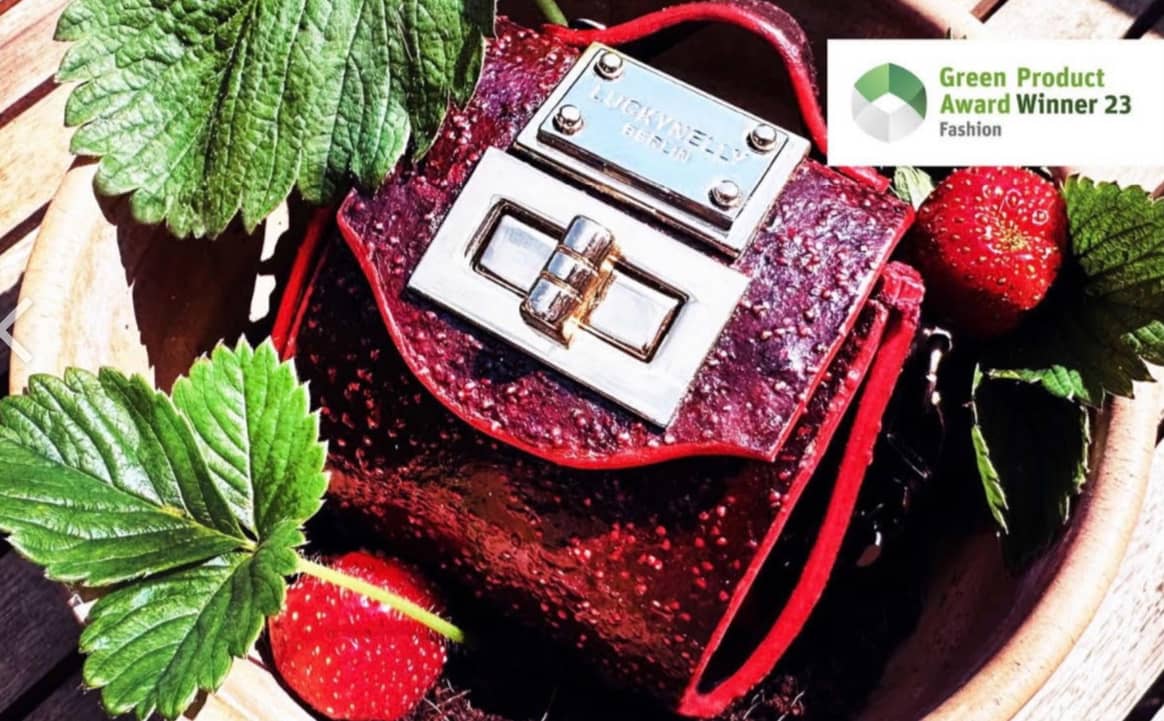

Yes, we were very pleased and very proud of this, as we developed this material ourselves. However, we have put the Berriestex material on hold for the time being, as we are currently working on the development of other exciting materials, such as Plantfur, a vegan fur material that is made from 100 percent plants and no plastic is used for it. Also “hair” made from 100 percent plants, with which I have just designed some handbags; one could also imagine a market for plastic-free hair extensions.
The composition of our material Berriestex is of course our trade secret, but it is made from overripe strawberries and combined with vegetable oils, waxes and resins to create this vegan “leather”.
Luckynelly also customises bags – what were the most unusual requirements you worked with?
Probably the most unusual request was a small bag that I made from a banana leaf from a friend’s garden.
Each item is handmade and therefore time-consuming and labour-intensive. How much does one have to spend on a Luckynelly handbag?
Yes, that’s right. It takes one to two days to make a Luckynelly handbag, but there is nothing I love more than creating new handbags and accessories and working with new exciting materials. Luckynelly is my heart and soul, which flows into every one of my bags. You can see and feel that.
Smaller accessories and bags cost around 150 to 350 euros, larger ones between 900 to 1900 euros, but they are made by hand to the highest quality and even the edges of the handbags are painted by hand.
A handbag from the big fashion brands often costs many times more than that and you don’t know much about the production and transparency.
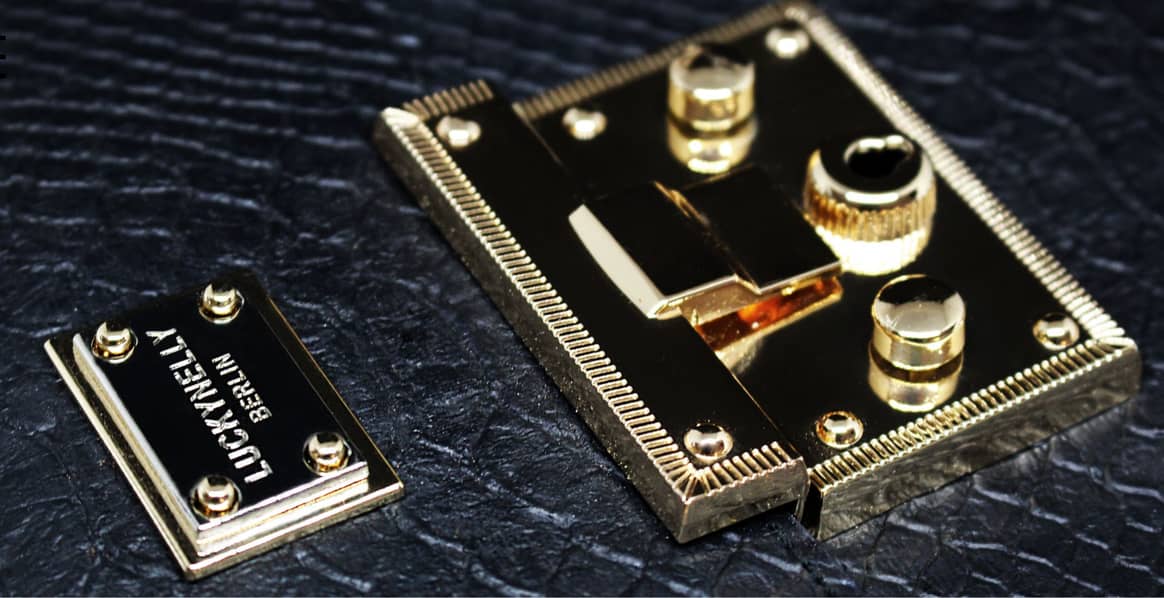

For your sales model, you are focusing on a few select shops – Gallery Malina in Berlin and Flying Solo in New York City. What led to this decision?
We are a slow fashion brand and offer small, limited collections. Most shops and online stores want to sell as many items as possible, which is not our goal. In our price segment, this makes perfect sense. Our bags are unique and that is what our customers want, something that nobody else has or can have. We want to convey a sentimental value that can be passed down through generations, a very special product with history and heart. We are not a handbag shop, but a designer label and I make the bags myself as a designer.
Is Luckynelly distributed worldwide? Which markets are the strongest?
Germany and the United States, but we are also focussing on the Canadian and Australian markets and others.
What is your plan for the future – a new material, an appearance at a fashion show or a new product?
Our latest vegan and sustainable luxury designer handbag collection 2023/24 is made from tea – Wastea – Now Leather. This forward-thinking material is a re-upcycled alternative to leather from the tea industry and is 100 percent sustainable, vegan, plant-based and bio-based. The bags are designed by myself in our own studio/manufactory in Berlin, the patterns are created by myself and handmade with the utmost attention to detail and care.
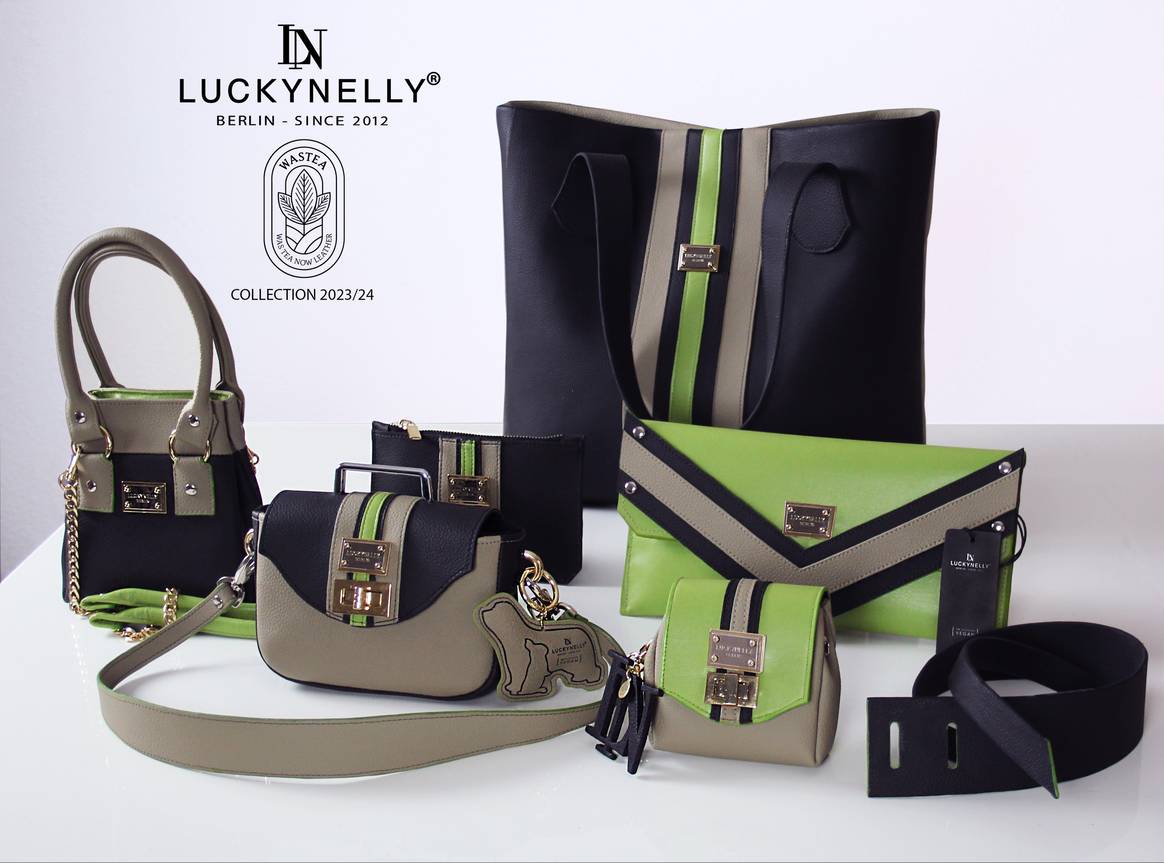

The shopper bag can be worn on two sides, for example, the black side with the design stripes or the other side, which is plain-coloured in “tea taupe”. Our Luckynelly – Berlin metal logo is attached to both sides, that is “to-wear-two-in-one”. Our Luckynelly “Co-Founders” pendant is also a key ring, and the strap of our new handbag “Ginger” can also be worn as a waist belt. Our round tags are also 24-carat gold-plated.
We are currently entering into many new partnerships with the most innovative material manufacturers and start-ups and are very much looking forward to working with many other new materials. We are also continuing to research plastic-free alternatives that are needed for the production of handbags such as edge colours, inlays, yarns, adhesives and others.
As you can see from our Instagram profile and our website, we are constantly creating new, unique, artful handbags and other accessories that have been featured in editorials in major fashion and art magazines around the world, such as Vogue, Elle, Harper’s Bazaar, Cosmopolitan, Grazia, Glamour, L’Officiel and many more. We have been seen on the catwalks of New York Fashion Week and Paris Fashion Week and have been featured as a sustainable designer brand at Berlin Fashion Week, as well as being featured in Forbes magazine.
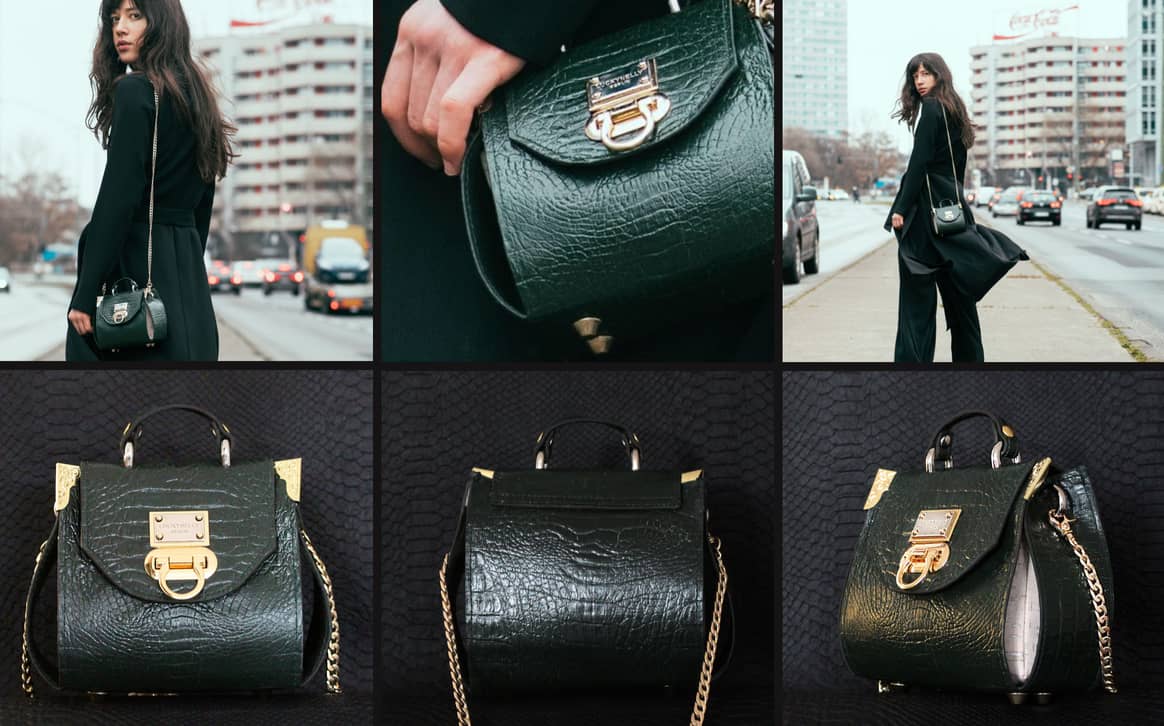

This interview was conducted in written format.
This post was originally published on this site be sure to check out more of their content.

